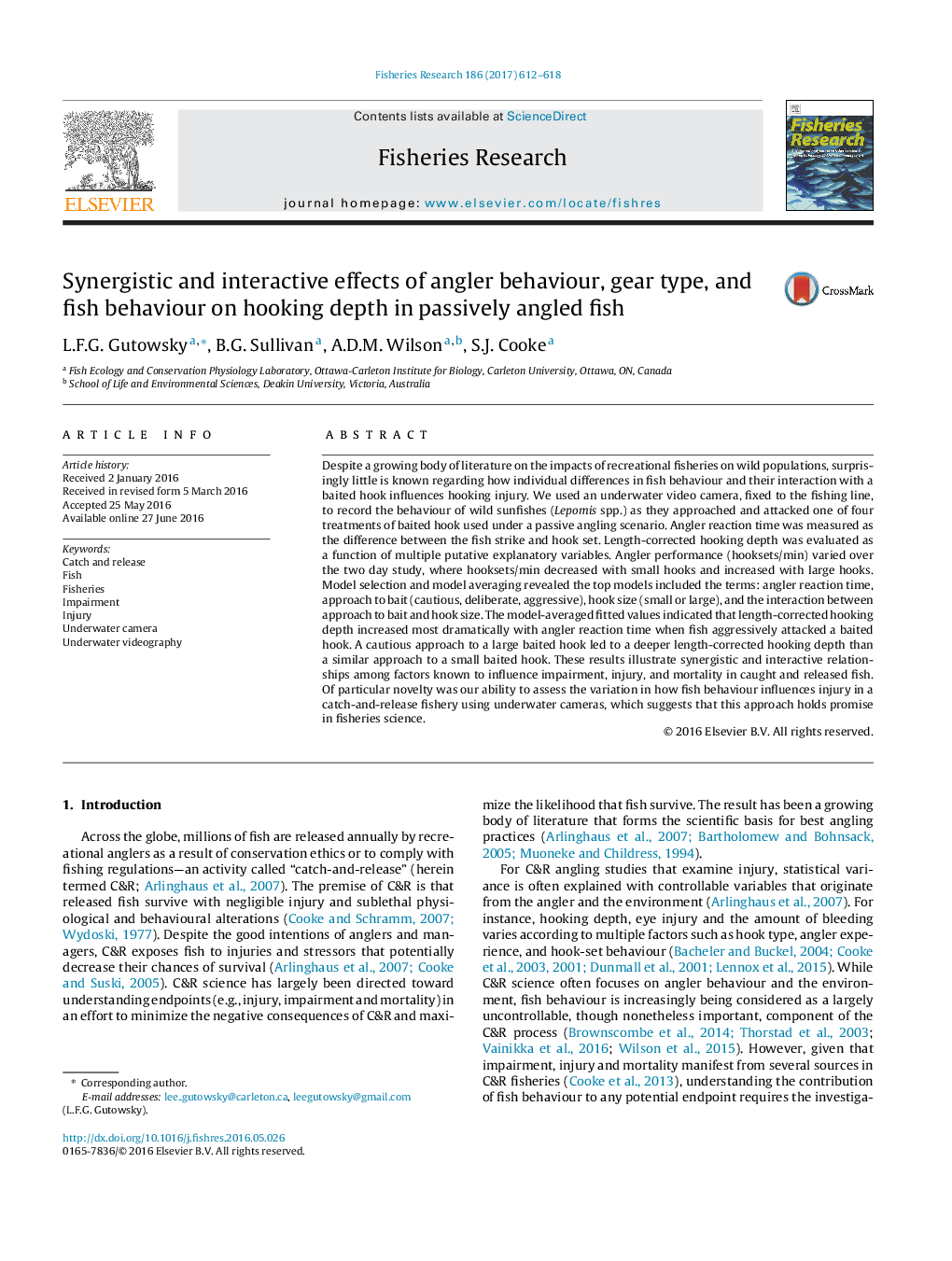| Article ID | Journal | Published Year | Pages | File Type |
|---|---|---|---|---|
| 5765668 | Fisheries Research | 2017 | 7 Pages |
Despite a growing body of literature on the impacts of recreational fisheries on wild populations, surprisingly little is known regarding how individual differences in fish behaviour and their interaction with a baited hook influences hooking injury. We used an underwater video camera, fixed to the fishing line, to record the behaviour of wild sunfishes (Lepomis spp.) as they approached and attacked one of four treatments of baited hook used under a passive angling scenario. Angler reaction time was measured as the difference between the fish strike and hook set. Length-corrected hooking depth was evaluated as a function of multiple putative explanatory variables. Angler performance (hooksets/min) varied over the two day study, where hooksets/min decreased with small hooks and increased with large hooks. Model selection and model averaging revealed the top models included the terms: angler reaction time, approach to bait (cautious, deliberate, aggressive), hook size (small or large), and the interaction between approach to bait and hook size. The model-averaged fitted values indicated that length-corrected hooking depth increased most dramatically with angler reaction time when fish aggressively attacked a baited hook. A cautious approach to a large baited hook led to a deeper length-corrected hooking depth than a similar approach to a small baited hook. These results illustrate synergistic and interactive relationships among factors known to influence impairment, injury, and mortality in caught and released fish. Of particular novelty was our ability to assess the variation in how fish behaviour influences injury in a catch-and-release fishery using underwater cameras, which suggests that this approach holds promise in fisheries science.
